Exploring the Potential of SocialFi Decentralized Social Media
Exploring SocialFi's Potential in Decentralized Social MediaAuthor: DWF Labs Research Translation: Shanooba, LianGuai
At this year’s EthGlobal Waterloo 2023 conference, Vitalik gave a speech expressing his concerns about the current web3 SocialFi space. He stated that existing web3 social Dapps may not be sufficient to replace their web2 counterparts.
He also suggested that developers should try to iterate new social Dapps using the unique features of Web3. Our goal is to build a social application that is 10 times better than similar Web2 products.
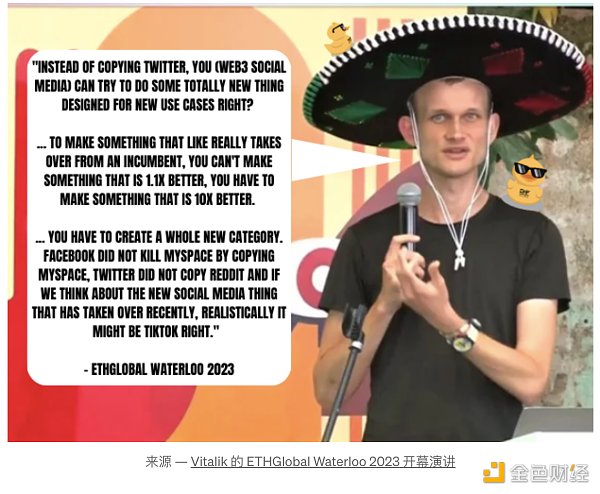
- 5 key risks of USD stablecoins that the Federal Reserve is most concerned about
- From Isolation to Collaboration The Significance of Data Pipelines in Web3
- Analyst The top 15 performing stock ETFs of the year are all related to cryptocurrencies.
At DWF Ventures, one of our main investment focuses is non-financial consumer Dapps. This has led us to explore the SocialFi space, particularly social media. In previous posts, our team discussed web3 social media, addressed Vitalik’s concerns, and encouraged the use of blockchain innovation and unique features to create entirely new Dapps.
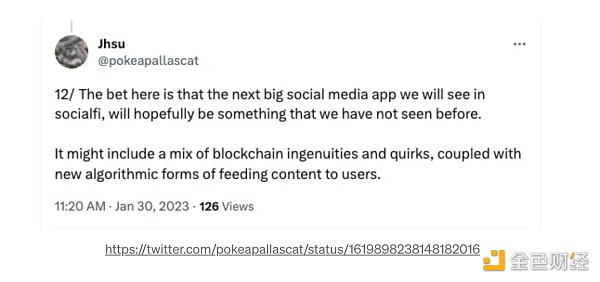
In this article, we will continue to explore the unique aspects of blockchain technology and reveal its potential to fundamentally change social media and user experiences for everyone.
Brief Overview of Web2 Social Media Platforms
According to one of the most commonly cited definitions of social media,
“Social media are a group of Internet-based applications that build on the ideological and technological foundations of Web 2.0, allowing the creation and exchange of user-generated content.”
– Kaplan AM, Haenlein M. (2010)
This definition encompasses social media platforms like Facebook, Instagram, Twitter, YouTube, Snapchat, and TikTok. These platforms provide us with multiple sources of constantly flowing information and keep us engaged throughout the day. Within the realm of social media applications, it can further be divided into eight major verticals:
-
Content Communities – Pinterest, Flickr, Youtube, TikTok, Soundcloud, Jamendo
-
Collaborative Projects – Wikipedia, Github
-
Blogs – WordPress, Blogspot, Substack
-
Microblogs – Twitter
-
Social News Sites – Reddit, Digg
-
Virtual Worlds – “World of Warcraft,” “Second Life,” “Bondee,” “Clubhouse”
-
Social Networking Sites – Linkedin, Facebook, MySpace
-
Business Communities – Amazon, eBay, iStockPhoto, Shopify
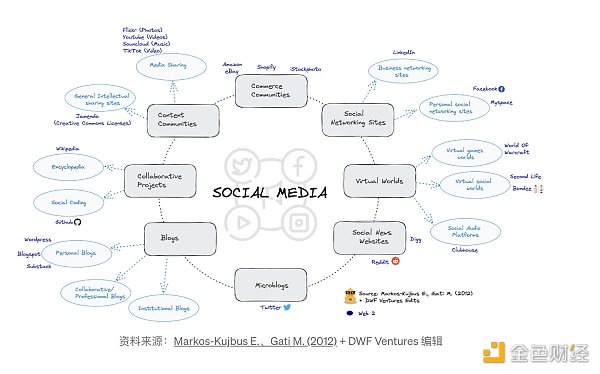
In web2 social media, users typically interact with the platform through this bundle:
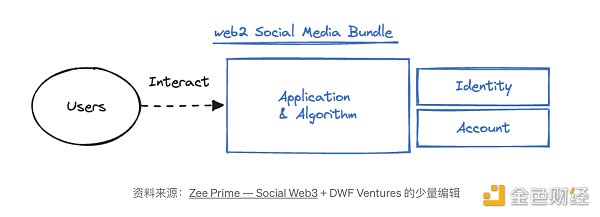
Currently, web2 users are willing to divulge significant amounts of information and social influence to social media platforms. However, this data remains siloed within each application, requiring users to start from scratch when using a new application. Lack of algorithm transparency and the absence of public code sharing also contribute to these challenges. The release of Twitter files demonstrated that these issues are indeed real, exposing the lack of neutrality and transparency in web2 social media platforms.
Web3 is a game changer for social media
Compared to web2, web3 has reshaped the way users interact with social media.
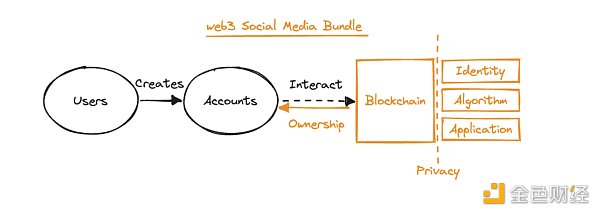
In web3 social media, user accounts become the main way to interact with the blockchain. Social media applications play different roles, serving as interfaces for account identity and algorithms. Web3 social media platforms do not rely on centralized trusted third-party (TTP) databases, but utilize the blockchain as a public database. This enables open verification and facilitates seamless data transfer between various social media applications.
Web3 social media completely disrupts the current dynamic between applications and users in the web2 social media environment. Users are no longer limited to specific applications as they have access to the code, algorithms, their own content, and social capital.
Win-win scenarios for stakeholders in Web3 social media
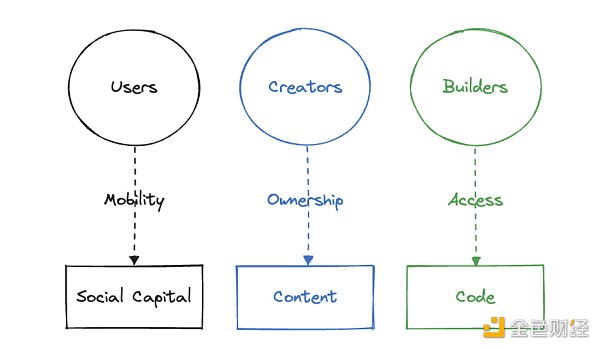
In addition to users, content creators and builders can now participate more dynamically in the social media space. Blockchain technology allows smart contracts to automatically pay royalties through NFTs without the need to share costs with TTP. As web3 projects are often open-source, builders can easily access the code in relevant spaces to build new applications when needed. Developers also don’t have to worry about user growth as they can easily port their social capital to new applications.
Potential development paths for Web3 social media platforms
Social media has come a long way since the early days of “Usenet” in 1979, a basic network for computer discussions. The definition of social media has evolved and adjusted with the development of three main driving forces:
-
Technological progress
-
Economic growth
-
Social and cultural influences
The limitations encountered by web2 social media in its evolution bear similarities to the current limitations of web3. The absence of on-chain data storage is reminiscent of past upload file size limits. The inability to handle large-scale transactions is reminiscent of the limitations of servers and gateways on forums. Expensive gas fees correspond to the high costs of early internet usage.
By recognizing these similarities, we can identify the driving forces behind web3 and outline potential factors that contribute to the development of an ideal web3 social media platform.
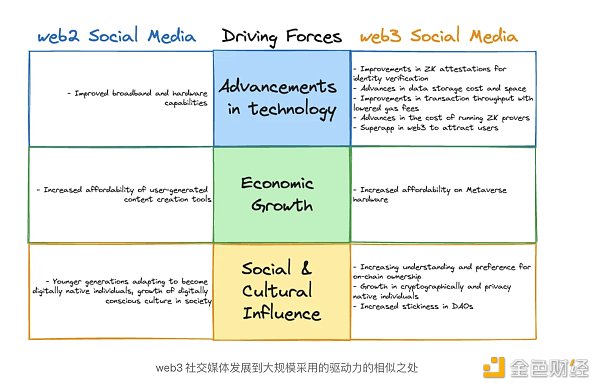
Web3 social media is ready
The potential factors necessary to catalyze the first wave of 1 billion web3 social media users are already in play. Given the view limitations of Twitter and Reddit APIs and the failure of moderators, there is currently a high demand for web3 social media, providing a favorable opportunity for its emergence.
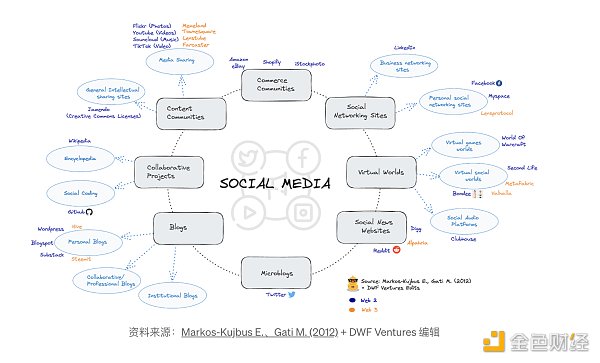
Above, we have outlined some popular web3 alternatives in the field of social media for users to refer to.
We will continue to update Blocking; if you have any questions or suggestions, please contact us!
Was this article helpful?
93 out of 132 found this helpful
Related articles
- POW track turns red and heats up Dynex, coin price soars several times, facing multiple community doubts behind
- Can tech giants bet on Web3 wallets to become a leverage point in the industry?
- What is the impact of improving the token economics of $RLB? What is its potential?
- Analyzing the first zk-fraud-proof system, the combination of Optimistic Rollup and ZKP
- The Metaverse applies continuous decoding of the ‘hard technology’ of the Hangzhou Asian Games.
- US Treasury Bonds Drive the RWA Track to Heat Up How Can Players with Different Genes Innovate?
- Considering from two perspectives integrating Fantom with OP Rollup to connect Fantom to Ethereum.






